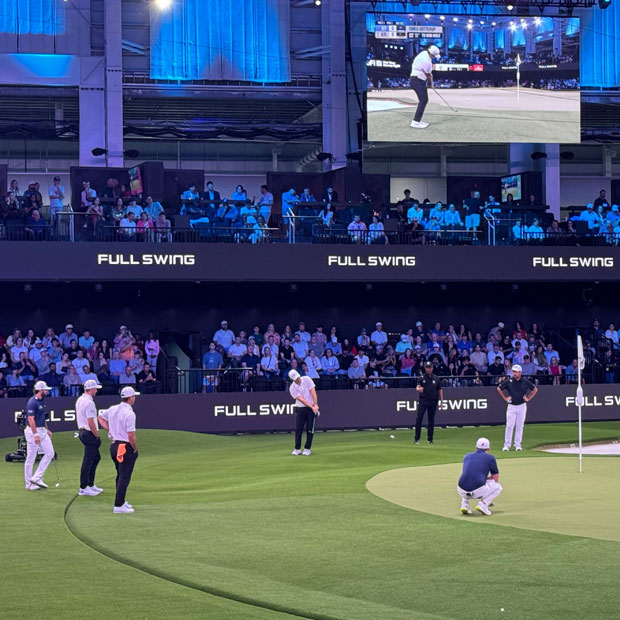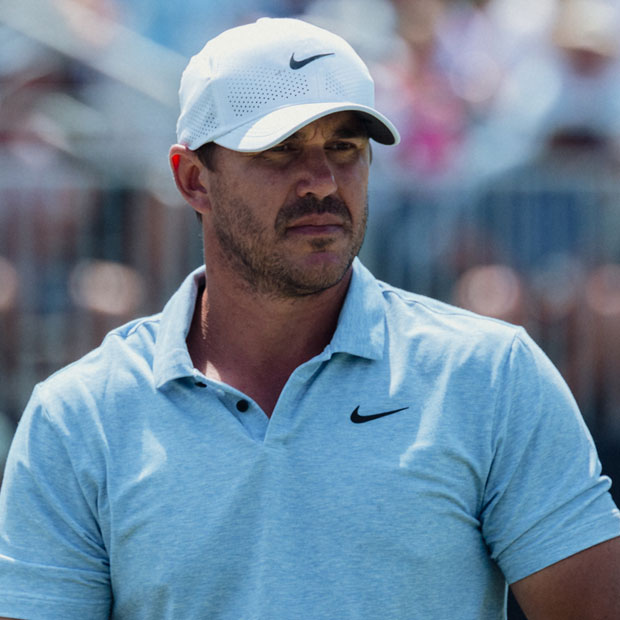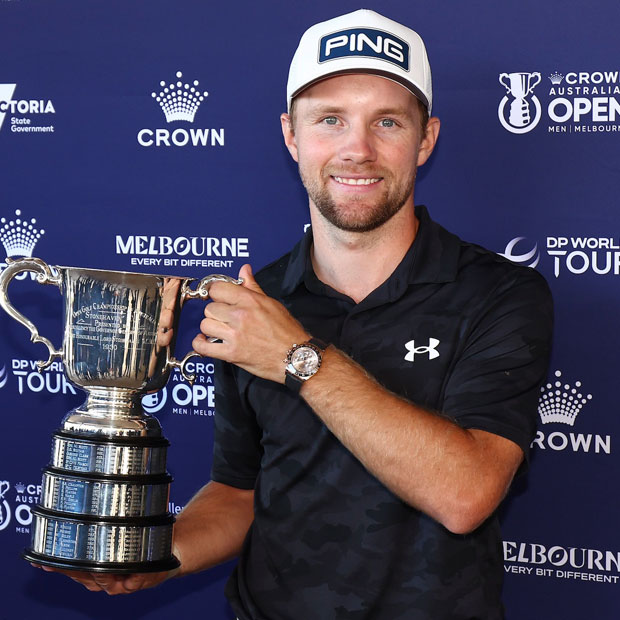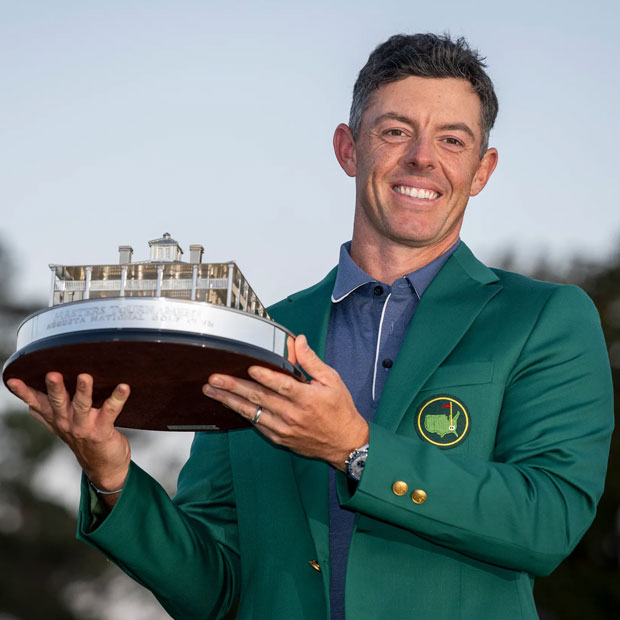Pace of Play in Pro Golf: The Fried Egg Report
At the U.S. Open, we put Bryson DeChambeau, Kevin Kisner, and Justin Thomas on the clock


Slow play has been a hot topic in golf for a long time. In recent years, it has become acceptable for professionals to play 18 holes in over five hours. I find that to be ludicrous. Rule 5.6 of the USGA Rules of Golf recommends that “a player should make a stroke in no more than 40 seconds (and usually in less time) after the player is able to play without interference or distraction.” Over the past 24 years, the PGA Tour has doled out one pace-of-play penalty. Which begs the question: Is playing fast an essential skill in golf?
I believe it is.
In a recent episode of Malcolm Gladwell’s podcast Revisionist History, he dove into timed test-taking and chess. It should come as no surprise that timed and untimed activities lead to different results. As chess Grandmaster Hikaru Nakamura put it, “If you removed time entirely from chess, every game of chess would be drawn.” In other words, stripping away the time element in high-pressure tasks homogenizes those tasks.
Consider Tom Brady, arguably the greatest quarterback in NFL history. His physical skills won’t wow you.
Where he excels is his knowledge, decision-making, and ability to read NFL defenses quickly. Most NFL quarterbacks struggle to make one audible during the 40-second play clock; Brady regularly makes a few. If the play clock didn’t exist, this transcendent skill would become irrelevant.
Similarly, in the NBA, the 24-second shot clock separates good from great offenses. Within that tight window, the best offenses can run their sets quickly and get great looks. An extended shot clock would diminish that advantage by giving less prepared and cohesive teams more time to manufacture a good look.
Why worry about pace of play?
In golf, enforcing pace of play would do two main things: 1) reward the skill of reading a situation quickly, and 2) improve the sport as a product.
You tell me which player is more skilled: the one who walks up to his ball in the rough and, in under a minute, can work with his caddie to calculate the yardage, assess the wind and lie, pick a club, and execute the shot? Or the one who takes two minutes to go through the same process? Right now, without enforcement of the USGA’s suggested pace-of-play guidelines, the skill of time management doesn’t exist in professional tournament golf.
But beyond that, slow play kills golf as an entertainment product. When we watch pro golf on TV or in person, we spend most of our time waiting for players to get ready to hit shots. If a proper pace of play were enforced, the televised PGA Tour in particular would improve by leaps and bounds. Producers would no longer have to guess when a player would hit a shot; they would know.
How bad is the pace-of-play problem at the elite levels of golf? Recently, I gathered some on-the-ground numbers.
The data
“It’s actually quite impressive that we’re able to get all that stuff done in 45 seconds; people don’t realize that it’s very difficult to do everything we do in 45 seconds.” -Bryson DeChambeau
On Friday afternoon of the U.S. Open, I followed Bryson DeChambeau, Kevin Kisner, and Justin Thomas, and I timed all of their shots except tap-ins for the entire front nine. I chose this group because DeChambeau has drawn considerable criticism for slow play from both media and fellow pros, whereas Kevin Kisner has a reputation as one of the Tour’s quickest. Seeing the two side-by-side offered an intriguing perspective.
As DeChambeau, Kisner, and Thomas worked their way through Pebble Beach’s front nine, I recorded the amount of time it took each player to hit each shot from the moment that it became clear the previous shot had ended. I also noted the order in which they played their shots within the group. To determine the exact start time for each shot, I simply used common sense. On approach shots, I started the clock when both caddie and player had arrived at the ball and the group ahead had vacated the green. On successive shots within the group, I started it when the previous shot had clearly ended—that is, when the previous player had picked up his tee, or when the preceding putt or chip had been marked, etc.
The results are below. The numbers in the left column—1, 2, and 3—represent the order in which the player hit the shot within the group. 1* signifies shots for which a player was first in the order but had to wait on the group ahead or called for a ruling. Finally, I have color coded the times: green = a time under 40 seconds; yellow = a time between 40-60 seconds; and red = a time over 60 seconds.

{{content-block-slow-play-pga-tour-001}}
Observations
- DeChambeau’s, Kisner’s, and Thomas’s times all decreased dramatically when they weren’t first to play. So any shot clock in tournament golf should differentiate between playing first and following. I would recommend one minute when a player is first and 40 seconds when he or she is following.
Green-reading books slow down play. Preparing for a putt used to entail glances at the surface from the front, behind, and sometimes the side. Now it includes all of that as well as deep study of a book. Worse yet, the green-reading books have bled into chip shots! Aside from diminishing the skill of reading the green and not being available to average golfers, the books grind play to a halt. Why are they allowed again? - From a pace-of-play standpoint, Kevin Kisner is a model golfer. He does his work while other players are doing theirs. His only red times came on approach shots when he played first. In the second or third spot, the man is lightning.
- There is no way to sugarcoat this: Bryson DeChambeau is painfully slow. On average, it took him twice as long to hit shots as Kisner. His problems become especially clear when plays first from any location except for the tee box. While I expected him to be slow, I was baffled that he averaged nearly two minutes on approaches and putts. That seems unacceptable to me—but not to DeChambeau, apparently. He has been staunch in defending his pace of play, stating that he walks faster than his playing partners to make up for his long process over the ball. That’s actually true: when Bryson knew he would be first to hit, he was typically out ahead of the group. The issue was that his caddie, lugging a 50-pound bag, couldn’t keep up. As a result, Bryson may have gotten to his ball early, but he had to delay his preparations until his caddie got there, too. (The times I gathered, by the way, were from when the caddie, not DeChambeau, arrived.)
An insight into @B_DeChambeau’s process 🔬 pic.twitter.com/WfTyzstkDu
— The European Tour (@EuropeanTour) January 27, 2019
- Justin Thomas fell right where I expected: in the middle. He was fast when he wasn’t first, but generally he was deliberate. His actions on the 4th hole illuminated one problem that pace-of-play enforcement could address. After attempting to drive the green, JT found the right bunker. From about 30 yards out, he and his caddie walked all the way to the green to survey the shot. In all, this took 85 seconds. Should it be allowed? Where’s the line? To me, these are the situations in which a time limit has the most value. If you choose to check out the green, you will sacrifice time to do other things. If we got to watch players make these kinds of decisions under pressure, the PGA Tour would be more compelling to watch.
Moving forward (or not)
It’s important to note that one group over nine holes is not a full sample size. So I would be curious more players timed in this way. In fact, the PGA Tour itself should be doing it for the sake of identifying the truly skilled players and improving its own in-person and television entertainment product.
Sadly, the chances that the Tour will do anything that ruffles players’ feathers are slim to none. Just yesterday Slugger White, the PGA Tour’s Vice President of Rules and Competitions, told Guy Yocom of Golfworld, “I hate slow play as much as the next guy, but I can’t agree with the idea of hitting players with penalty strokes.” As long as that attitude prevails among Tour officials, we can expect the slow-play problem to keep getting worse.
Leave a comment or start a discussion
Engage in our content with thousands of other Fried Egg Golf Club Members
Engage in our content with thousands of other Fried Egg Golf Members
Get full access to exclusive benefits from Fried Egg Golf
- Member-only content
- Community discussions forums
- Member-only experiences and early access to events












Leave a comment or start a discussion
Lorem ipsum dolor sit amet, consectetur adipiscing elit. Suspendisse varius enim in eros elementum tristique. Duis cursus, mi quis viverra ornare, eros dolor interdum nulla, ut commodo diam libero vitae erat. Aenean faucibus nibh et justo cursus id rutrum lorem imperdiet. Nunc ut sem vitae risus tristique posuere. uis cursus, mi quis viverra ornare, eros dolor interdum nulla, ut commodo diam libero vitae erat. Aenean faucibus nibh et justo cursus id rutrum lorem imperdiet. Nunc ut sem vitae risus tristique posuere.